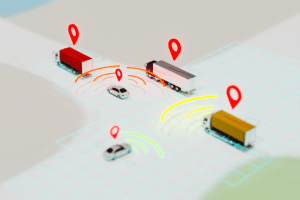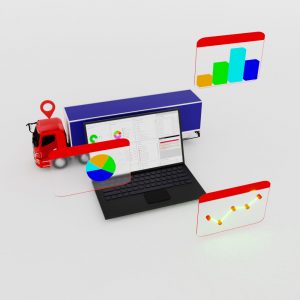According to the research conducted by Idate (European Digital Economy think tank), it is projected that the global M2M market would display an average annual growth of 30% in volume and global revenue to hit over $40 million. This suggests there will only be more industries that will tap onto the use of M2M to boost their IoT business processes. In this article, we will be exploring how M2M data power IoT systems in various industries.
What is M2M data?
M2M stands for Machine to Machine and it refers to the technologies that make communication possible between machines, sensors, assets and humans.
M2M gains a competitive edge against other competing technologies which can perform similar functions of powering IoT systems. Unlike M2M, other communication technologies such as Sigfox, Lora wan, NB-IoT have their limitations. These technologies are more suited for stationary IoT sensors such as electricity meters rather than GPS based tracking devices that require real time sending of data as the power consumption and base station handover can be problematic.
Furthermore, roaming M2M data enables multi-telco roaming over 100 countries and is readily available in any market through the 2G, 3G and 4G networks. Given that M2M’s capabilities and benefits can be readily realised without largescale infrastructure spend or dependant on limited network from new competing technologies, it is worthwhile for us to learn more about the power of M2M and its industry applications.
The power of M2M:
Given that M2M allows for machine to machine communication, devices that used to operate in isolation are now interconnected to other devices to gather vital information and improve business processes.
M2M data provides devices such as sensors and tracking devices the ability to transmit information to servers and platforms. The ability to do this cheaply and quickly has allowed for a greater proliferation of connected devices such as vehicle trackers, car trackers, IoT gateway and remote sensors. Without this affordable and reliable data transmission method, a world where data is currency would not be possible. The advent of even faster networks geared toward supporting the growth of IoT such as 5G will allow for even more connected devices on M2M communication channels to come online.
It is evident that M2M has not only enabled the Internet of Things (IoT) but it has changed the way different industries use technology dramatically. Now, let us look at how M2M technologies have impacted different industries.
1) Manufacturing
M2M communication has revolutionised the monitoring process of machines and changed the way manufacturing companies operate. Sensors embedded with M2M data SIMs monitor the machine’s performance. Any anomalies such as changes in temperature, pressure or vibrations are detected by the sensors. The system communicates this information to other connected devices with M2M SIMs, hence, allowing manufacturers to deliver predictive and preventive maintenance works which enhance the machines’ performance and productivity.
2) Logistics and Transportation
M2M technology has changed the way assets are tracked and traced. Now, vehicles and assets equipped with IoT sensors and tracking devices allow companies to track the real time location of assets continuously even when they cross borders. Beyond tracking the assets and conveyances, the conditions of the goods within such as its temperature and humidity can be tracked too. Within logistics, the security and safety of assets through electronic seals that rely one M2M connectivity to send real time tamper alerts for investigation.
3) Retail
One widespread use of M2M connectivity has been within retail. Point of sales terminals require fast and reliable connection when electronic forms of payment are made. M2M powers this transfer of critical data so that transactions can be quick and painless. M2M technology powers the point of sales terminals and enables contactless transactions in the retail industries which in turn, simplify the whole shopping experience for consumers. The ability to have point of sales terminals that are rechargeable and wireless allows cashless payments to be made for businesses on the go. M2M allows this connectivity flexibility where no WiFi or LAN cable is required to power the transaction.
4) Smart Infrastructure
Street lighting management systems often use M2M connectivity to connect individual streetlamps to smart grid and lighting systems. Each connected street lamp is embedded with a M2M SIM to bring it to life. Given that the monitoring process of these street lamps have been digitalised, it allows engineers to retrieve performance data and identify faults remotely. This allows relevant authorities to address any issues in a timely manner which in turn, helps to reduce downtime and manpower costs. Smart street lighting also can play a large role in the collection of data through sensors that can be powered through the infrastructure to collect environmental data such as pollution. All this data can be sent through M2M connectivity channels effectively.



